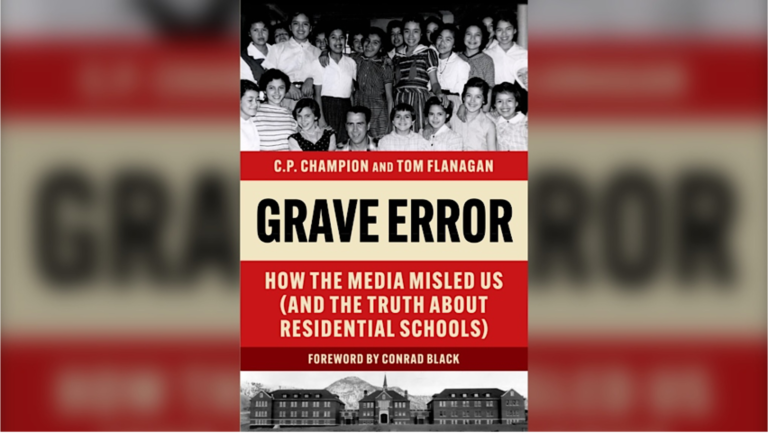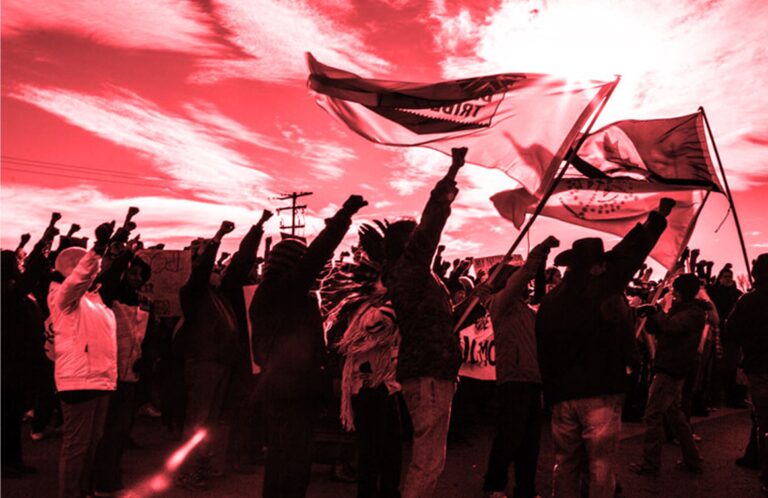The Voice has been silenced. Earlier this month, Australians had their say on a controversial plan to amend their Constitution to give Indigenous groups a new lever of control over the country’s federal institutions. Called The Voice, it would have empowered a native assembly to make representations directly to Parliament and Cabinet to promote Indigenous political objectives.
Proponents of the plan said this was necessary to redress past injustices faced by Aborigines in Australia. But, it was repeatedly stressed during the referendum campaign, it did not entail a veto over government decisions. The Voice would simply be a forum for generating native advice. Such a claim was belied, however, by the referendum’s foundational document, called the Uluru Statement from the Heart, which promulgated the concept of native “ownership of the soil, or…sovereignty,” a right that “has never been ceded or extinguished, and co-exists with the sovereignty of the Crown.” In effect, The Voice was to be a parallel source of authority alongside traditional Western-style democracy and law-making.

To succeed, the referendum required majority support in four of Australia’s six states, as well as a national plurality. On October 14, it was soundly defeated in every state, with the country as a whole voting 60.7 percent against. Unwilling to sign a blank cheque drawn on their fundamental democratic rights, Australians firmly rejected The Voice. It was the largest such vote in Australia’s long history of popular referendums.
Canadians, unfortunately, have yet to be given a similar opportunity.
Rather than being allowed to make a single conclusive statement on the ceding of national sovereignty to Indigenous groups or interests, Canadians have instead witnessed the imposition of such a policy piecemeal and largely by stealth through the courts. And governments at all levels have acquiesced – willingly and at times even enthusiastically – to this erosion of their authority.
The landmark Gold Fields Act of 1859...protected free miners from unscrupulous companies or syndicates that sought to bully smaller operators out of business or steal their work outright by claim jumping.
The latest evidence of this disturbing process comes in a September ruling by the B.C. Supreme Court in Gitxaala v. British Columbia (Chief Gold Commissioner). It declares B.C.’s profoundly fair and transparent 164-year-old mining tenure law to be in breach of the province’s constitutional duty to consult with Indigenous people. In doing so, the court substitutes native sovereignty for the national variety. It is thus one more in a long string of rulings and laws undermining the moral and legal certainty of Canadian democracy. The foreseeable result of this discreditable process is the progressive delegitimization of national sovereignty throughout the country.
The Free Miners of B.C.
At issue is legislation that has been in place in B.C. since before the province entered Confederation. The landmark Gold Fields Act of 1859, written by famed first Chief Justice Sir Matthew Baillie Begbie, sought to make the province’s mining industry fair for small, independent prospectors. These hardy souls, known as “free miners,” were given the right to stake a claim to a portion of the province’s vast mineral wealth if they were initially prepared to do the hard work of finding it. This process – accomplished by being the first to physically pound stakes into the ground in a particular area – protected free miners from unscrupulous companies or syndicates that sought to bully smaller operators out of business or steal their work outright by claim jumping.
Begbie’s original rules were updated periodically as technology changed. Starting in 2004, for example, free miners were able to “stake” their claims via computer. As the law stands now, for a modest $25 fee, prospectors can roam the province looking for potential deposits. If they find a suitable site, they can then register a claim online at the rate of $1.75 per hectare and become the “recorded holder,” providing them with exclusive but temporary rights to the minerals located within that area.
Staking a claim is only the first of many complicated, risky and costly stages on the path to creating a mine. To assess the potential value of a staked claim, the holder must perform basic exploration work. At the claim stage, however, this work can only be done with hand tools. Explosives and machinery are forbidden; holes or trenches can only be 1.2 metres deep and are limited to five per claim. There are also strict limits on how much material can be removed for analysis.

If a site proves promising, a claim holder may choose to move to the next stage, which is acquiring a provincial mining permit. This allows for mechanical excavation, road building and other substantial work. To receive a permit, a claim holder must meet a host of regulatory requirements, including consultation with any affected Indigenous groups. As the permit stage necessitates substantial financial resources, expertise and patience, many free miners with promising claims will join forces with larger companies or sell their rights and go back to prospecting. Later stages of a potential mine’s development pose even greater obstacles, such as comprehensive environmental assessments.
Regardless of the effort required to build a mine, the unhindered ability of free miners to stake claims and do the work required to keep them is a key component of the North American mining industry, as well as in many other parts of the world. It is an egalitarian approach that enables all manner of geological ideas to be tested and new participants to enter the industry. In turn, it promotes mineral developments that provide well-paying jobs – including to Indigenous people. And it is based on two fundamental and long-standing principles of Canadian law. First, that the Crown owns all land that has not otherwise been sold or granted to individuals; second, that all subsurface minerals are the exclusive property of the Crown to be allocated as it sees fit. Both concepts have been upended by Gitxaala.
What’s at Stake
In 2021 and 2022 respectively, the Gitxaala and Ehattesaht First Nations of B.C. filed petitions with the B.C. Supreme Court claiming the province’s time-honoured claim-staking procedure was unconstitutional because it violated the government’s “duty to consult” with the Indigenous population. This still-evolving and vaguely defined process is entirely the invention of Canada’s courts and is intended to identify and reduce any purported harm that may be suffered by such groups as a result of natural resource exploitation or construction of major projects or infrastructure. It covers not merely the lands of First Nations reserves, but any lands where an Indigenous group may claim an interest, such as past hunting areas, encampments or places of spiritual significance; in other words, potentially anywhere and everywhere.

As explained above, B.C. law currently handles this “duty to consult” at the mining permit stage. This makes sense given that mining permits allow for major work and disturbances that could have an impact on nearby Indigenous communities. It does not, however, make sense to impose a duty to consult at the initial claim-staking stage, for several reasons. First, it would be a practical impossibility. Between 5,000 and 6,000 mineral claims are registered in B.C. every year. It seems beyond imagination that 6,000 consultations could be conducted in a timely manner, particularly in comparison to the current online claim-staking system.
Second, such a requirement would pose a crippling financial and time burden on the province’s legion of free miners. At the claim stage, there is no evidence of any economic value. Often the prospector stakes a claim on the basis of little more than a hunch and some promising topography. Imposing an onerous duty to consult at this point would mark the end of Begbie’s centuries-old goal to democratize the province’s prospecting business. It could even bring the entire exploration industry to a standstill. In 2021, mineral exploration in B.C. accounted for $660 million in private expenditures. The mining industry as a whole generates over $7.3 billion in annual revenues, supports 11,000 jobs and sluices $250 million in tax revenue into the provincial treasury.
Finally, even if the province’s exploration industry could survive the extra financial and bureaucratic burdens of a duty to consult on each of 6,000 annual claims, doing so would rob prospectors of their most valuable resource – private knowledge. Given that claims are often staked on hunches and past experience, it is clearly disadvantageous to force prospectors to reveal that information to their competitors prior to completing the process. The great advantage of B.C.’s current online claim-staking system is that it is instant and anonymous; no one can know where a prospector intends to stake until it is complete. Imposing a duty to consult at this stage would force applicants to reveal their hunches to a host of potential competitors.

It is a possibility that worries many prospectors and miners throughout the county. Michael Malouf, owner of Quaternary Mining & Exploration based in Geraldton, Ontario, has prospected and mined in Northern Ontario for 47 years. Asked for a comment on the precedent Gitxaala sets for B.C. and the rest of the country by requiring a duty to consult at the claim stage, Malouf observes that, “A prospector would be foolish to provide anyone with advance notice of where he intends to register his claim. The purpose of registering his claim is to prevent people from stealing his idea. This is akin to why an inventor would protect his idea by applying for a patent from the patent office before going public with his idea.”
As Malouf’s own experience reveals, sometimes an independent miner’s competitors are the very native groups being consulted. In 2020, Malouf found himself enmeshed in a complicated lawsuit launched by the Ginoogaming First Nation of Northern Ontario over a provincial mining permit he was issued in 2019 for a gold mining claim in Longlac, about 300 km northeast of Thunder Bay. Malouf had spent 35 years and $12 million exploring the area and, after unsuccessfully trying many times to engage the Ginoogaming’s leadership in necessary consultations, found himself sidelined when the First Nation suddenly declared an interest in the mine’s location, claiming it to be sacred to them.

The land in question, however, is clearly Crown land, having been surrendered in 1906 by Treaty 9 and lying outside the First Nation’s reserve. And Malouf was properly issued a provincial permit for his exploration efforts. Further, the Ginoogaming themselves had previously held a mining claim for an area directly adjacent to Malouf’s. And the First Nation is currently conducting logging operations throughout the ostensibly sacred area. Local news sources have also reported that the Ginoogaming are interested in acquiring the area in question for themselves, as an expansion to their reserve. If that becomes the case, they will be able to do whatever they wish with the land. The legal battle between the province and the First Nation continues, but as a result of the proceedings Malouf has lost his permit and seems highly unlikely to ever see a return on his decades of effort.
A Duty to Consult…with Ghosts?
A key element of Justice Alan Ross’s ruling in Gitxaala is whether B.C.’s existing mineral tenure law, which imposes a duty to consult at the mining permit stage rather than when staking a claim, “adversely affects [the First Nations’] asserted rights.” Since claim holders are strictly limited in the kind of work they can do and the samples they can remove, the potential for actual harm at the claim-staking stage seems minimal.
‘The mineral tenure system allows miners to stake claims over areas that constitute these supernatural dens,’ Ross’s judgment reads; ‘mineral exploration constitutes disruption of these sacred areas and is forbidden under Gitxaala law.’
In fact, the court accepted only two minor examples of any actual physical impact. One involved the illegal removal of quartz crystals from an Ehattesaht location by a prospecting firm, which was promptly punished and remediated by the province. The other concerned the possibility that a local source of coloured chalk, which holds cultural significance for the Gitxaala, might be disturbed or sampled by prospectors, leading to a “loss of minerals.” But such a concern can easily be dealt with under existing rules, as the crystal example proves. And in treating any “loss of minerals” as evidence of economic harm, the court made a fundamental error. All rock is a composite of minerals. Only when it is determined there’s a sufficient percentage of commercially valuable minerals in a specific location can it be termed “ore” that could, in turn, be mined for profit. Raw minerals outside a commercially viable ore body typically have no real value.

In the absence of any convincing physical impacts, the court appeared far more interested in what it called “non-physical” issues having to do with “cultural and spiritual…places of significance.” One key example, according to Ross’s ruling, is the presence of spirits, called Naxnanox, which are said to live in physical dens throughout the area. Gitxaala hereditary chiefs, the judge explained, have a responsibility for “the maintenance of the homes, or dens, of the supernatural beings that are core to their beliefs.”
“The mineral tenure system allows miners to stake claims over areas that constitute these supernatural dens,” Ross’s judgment reads; “mineral exploration constitutes disruption of these sacred areas and is forbidden under Gitxaala law.” Further, “The registration of any mineral claims on Gitxaala Territory brings shame to all the houses by virtue of disrespectful or incorrect behaviour. This is known as ‘dirtying the blanket’.” The court accepted all this without comment or objection, including the claim that the actual location of any dens housing supernatural beings was a “guarded secret” known only to the hereditary chiefs. It seems Indigenous romantic fabulism has penetrated deeply into the fabric of the Canadian judiciary.
From this slender and curious evidence, Ross concluded that the two First Nations had indeed suffered harms and that they, rather than the Crown, have the right to determine how any minerals on their claimed lands can be sought for or used. Ross cited as authority for his decision a long list of previous court rulings, as well as the 2007 United Nations Declaration on the Rights of Indigenous Peoples (UNDRIP), which has been endorsed by the federal government, plus B.C.’s Declaration on the Rights of Indigenous Peoples Act (DRIPA), which seeks to incorporate UNDRIP into provincial law.
Based on the Supreme Court of Canada ruling in 2004’s Haida Nation v. British Columbia that dealt with forest resources, Ross found that B.C.’s current system triggers a “duty to consult” because “it causes adverse impacts upon: 1) areas of significant cultural and spiritual importance to the petitioners; and 2) the rights of the [Gitxaala and Ehattesaht] to own, and achieve the financial benefit from, the minerals within their asserted territories.” In using the Haida test to assign subsurface mineral rights in B.C. to Aboriginal title, Ross appears to be setting a new precedent in Canada.
The time-honoured legal certainty, anonymity and fairness of B.C.’s mining tenure law has thus been demolished by a legion of spiritual beings that can only be seen by the plaintiffs. As a result, it appears the native community now has a veto over all mining activity in British Columbia.

What it Means
Ross gave the province 18 months to add a duty to consult for free miners to its claim-staking procedures. In a statement after the ruling, Gitxaala Chief Councillor Linda Inness crowed that, “The provincial government must now act quickly to eliminate its unjust practice of selling off our rights without our consultation or consent.” As such, it appears Gitxaala is yet another example of how Canadian governments have ceded their authority to make decisions regarding land use to native authorities that purport to make decisions based on ancient beliefs and customs that can only be interpreted by a select few interested parties.
And notice how Inness called the mining rights in question “our rights” rather than belonging to the Crown, as they do in law. By imposing a duty to consult at the earliest possible stage of mineral exploration, the native community now appears to control the very foundation of the province’s entire $7.3 billion-per-year mining industry. Is there any role left for government to play?
From the court’s perspective, government control over any aspect of the country’s vast natural resource wealth seems merely custodial and temporary, awaiting ultimate native control.
Despite this existential threat to its own legal supremacy, B.C.’s NDP government made only a half-hearted attempt at defending itself. As Ross noted, despite pointing out the enormous economic impact arising from the mining industry, the province acknowledged that “its obligation to consult could not be avoided or delayed on the basis that mining is good for the economy.” In a similar vein, the Association of Mineral Exploration, British Columbia (AME) also appeared to roll over. In a press statement following the ruling, AME president Keerit Jutla meekly submitted that, “Our goal is to ensure the mineral claim staking process remains competitive and efficient, while respectful of the rights of Indigenous Peoples.” There has been no word of any potential appeal from the province.

According to Ross, until Aboriginal title is finally settled in B.C. by litigation or negotiation (and virtually the entire province is claimed by one or more native groups), B.C. retains the right to manage Crown land and resources, subject to this ever-widening duty to consult. But once title is established, a First Nation’s “system of law may govern” in that territory. This the court appears to consider as inevitable. “The obligation of the Crown is to administer the territories until such time as Aboriginal title is settled,” Ross wrote, and “to preserve the territories such that each First Nation can exercise its Aboriginal title rights after Aboriginal title is settled.” From the court’s perspective, government control over any aspect of the country’s vast natural resource wealth seems merely custodial and temporary, awaiting ultimate native control.
This is a clear violation of the supreme lawmaking authority of the federal and provincial governments and represents a virtual usurpation of Crown legitimacy and power. But Ross’s reasoning is no outlier. Throughout the judiciary, legal organizations and government itself, the notion that Indigenous Canadians have the right to essentially secede from the rest of the country by imposing their own laws – and ignoring Canadians ones – has taken hold with surprising force and swiftness. Gitxaala is simply one more iteration of this secessionist phenomenon driven by the Canadian judiciary and supported by our legal system.
The Self-Destructive Urge

In November 2021 former B.C. Chief Justice Robert Bauman told a legal conference in Vancouver that “the Canadian justice system must recognize the existence of the many Indigenous legal orders in Canada, reconciling them with the common law and current legal protocols.” He talked about non-Indigenous Canadians and their governments’ “jealous need for control” being “destructive” and referred to the ancestors of non-Indigenous Canadians as “uninvited guests” in Canada. Bauman further described the court system for which he was partly responsible as “a barrier to justice” for Indigenous people.
The B.C. bar seems no more committed to its own existing system. In the article “The Crown’s Duty to Determine, Recognize and Respect Aboriginal Title” published recently in The Advocate, the official publication of the Vancouver Bar Association, lawyer Tim Dickson argues that the “gap between what our law and politics call for in theory and what has been recognized in practice poses a real challenge to the legitimacy of the Crown’s continued assumption of jurisdiction and control of the land base…The question we must ask ourselves is whether the continuation of this scenario is honourable – whether it is legitimate – given our contemporary legal, political and moral values and understanding.” Reflecting on the gist and spirit of Gitxaala, Dickson answers in the negative: the B.C. government’s jurisdiction and control of its land base is ultimately dishonourable and illegitimate.
Such a deliberate undermining of the foundations of Canadian law and sovereignty by Canadian lawyers and judges seems stunning. But it is by no means novel or new. It is a process that began with section 35 of the Constitution Act, 1982, which “recognized and affirmed” the existing treaty and other rights of the “aboriginal peoples of Canada.” This immediately undermined the stated goal of the Constitution to treat all Canadians equally, by creating extra rights for some, with often absurd results when these conflicting rights collide. The Supreme Court of Canada’s 1997 ruling in Delgamuukw v. British Columbia was the first of several key cases, including the previously mentioned Haida, that have identified and expanded upon the ever-expanding notion of Aboriginal title in B.C. In doing so, this legal movement has expressly shorn successive governments of their sole right to make laws relating to land use and development and called into question the validity of the titles to all privately owned real property in the province.

But the damage is not entirely court-imposed. Equally damaging have been concomitant legislative steps, such as the federal and B.C. governments’ enshrining of UNDRIP into domestic law as interpretive principles, thus weakening Canadian governments’ claim to exclusive legitimacy and sovereignty. The NDP government’s passage of DRIPA in 2019 mandates a diminution of provincial powers and sovereignty, and proved to be a key consideration in Justice Ross’ ruling. And earlier this year, the Justin Trudeau government passed its sovereignty-surrendering UNDRIP Action Plan, designed to “Indigenize” all areas of federal jurisdiction. In both cases, governments are actively ceding their own authority to a parallel form of native government. And with unknown results for the entirety of Canada.

In Reflections on the Revolution in France, political philosopher Edmunt Burke wrote that a government “cannot renounce its share of authority.” To do so is to “destroy the fabric of the state,” which becomes “disconnected into the dust and powder of individuality.” Gitxaala is one more revolutionary attack on the fabric of a Canadian state that seems all too eager to renounce its own authority. It is time Canadians were given the opportunity to express their own Voice on the crucial question of national sovereignty and democracy.
Peter Best is a lawyer based in Sudbury, Ontario and author of the 2020 book There Is No Difference: An Argument for the Abolition of the Indian Reserve System and Special Race-based Laws and Entitlements for Canada’s Indians.
Source of main image: Jeff Nicholls [Tsimshian], retrieved from First Peoples Law.






